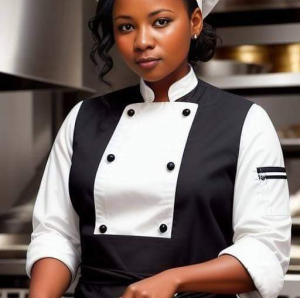FOOD AND BEVERAGE SERVICE
Completion requirements
1. The Food Service industry
1.3. the meal exprience
There are many different kinds of food and beverage operation, designed to meet a wide range
of demand. These different types of operation are designed for the needs people have at a
particular time, rather than for the type of people they are. For example, a person may be a
business customer during the week, but a member of a family at the weekend; they may want
a quick lunch on one occasion, a snack while travelling on another and a meal with the family
on another occasion. Additionally, the same person may wish to book a wedding or organise
some other special occasion.
The main aim of food and beverage operations is to achieve customer satisfaction. In other
words, to meet the customers’ needs. The needs that customers might be seeking to satisfy
include:
l Physiological: for example, the need to sate one’s appetite or quench one’s thirst, or the
need for special foods such as diabetic or vegetarian.
l Economic: for example, the need for good value; rapid, fast service; a convenient location.
l Social: for example, going out with friends or business colleagues; attending a function in
order to meet others.
l Psychological: for example, the need for enhancement of self-esteem; fulfilling life style
needs; the need for variety; as a result of advertising and promotion.
l Convenience: for example, as a result of being unable to get home (shoppers, workers) or
attending some other event (cinema, theatre); the desire for someone else to do the work;
the physical impossibility of catering at home (weddings and other special functions).
Customers may want to satisfy some or all of these needs.
As the reasons for eating out vary, then so do the types of operation that may be appropriate at
the time. Differing establishments offer different service, in both the extent of the menu and
the price, as well as varying service levels. The choice offered may be restricted or wide.
It is important to recognise that the specific reasons behind a customer’s choice will often
determine the customer’s satisfaction (or dissatisfaction), rather than the food and beverage
service by itself. One example is the social need to go out with friends: if one person fails to
turn up or behaves in a disagreeable way, then the customer may be dissatisfied with the meal.
If a customer is not able to satisfy his or her needs they will be dissatisfied. The customer may,
for instance, be dissatisfied with unhelpful staff, cramped conditions or the lack of choice
available. These aspects are the responsibility of the food and beverage operation. However,
sometimes the reasons for the customer being dissatisfied might be beyond the operation’s
control, for example, location, the weather, other customers or transport problems.
Not all customers have a full choice. Those that do are often referred to as the non-captive
market; those that don’t are often referred to as being part of a captive market.
l Non-captive markets: the customer has a choice of eating out opportunities both in terms
of the food and drink to be consumed and the type of operation they may wish to go to.
While it is true that certain types of catering operations generally attract a certain type
of customer, this is by no means true all of the time. The same customers may patronise
a variety of different operations depending on the needs they have at a given time, for
example, a romantic night out, a quick office lunch or a wedding function.
l Semi-captive markets: the availability of choice is also important in this market. Customers
may choose, for example, a certain airline or ship or hotel based upon the identification of
certain needs they wish to satisfy.
l Captive markets: this is where the customer does not have a choice of operation, but there
is still a need for satisfaction. For instance, it is generally recognised that better fed workers
are more productive and that better fed patients recover quicker. ‘Better fed’ here, though,
does not just refer to the food and drink provided but the whole experience of the meal.
From the food and beverage operator’s point of view it is important to recognise that the
customer’s needs may vary and that food and beverage operators should be aware of factors that
might affect the customer’s meal experience. Much research has been carried out in recent years
identifying these factors. They range from location to the acceptance of credit cards, and from
attitudes of staff to the behaviour of other customers.
